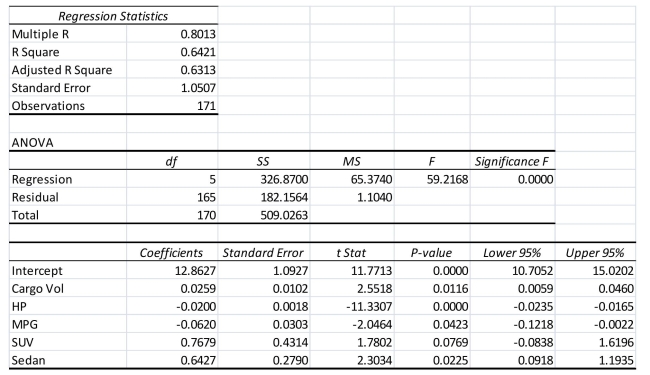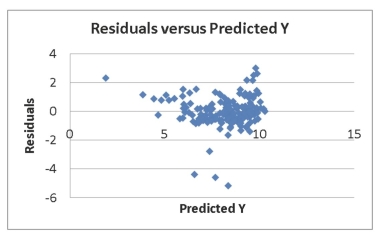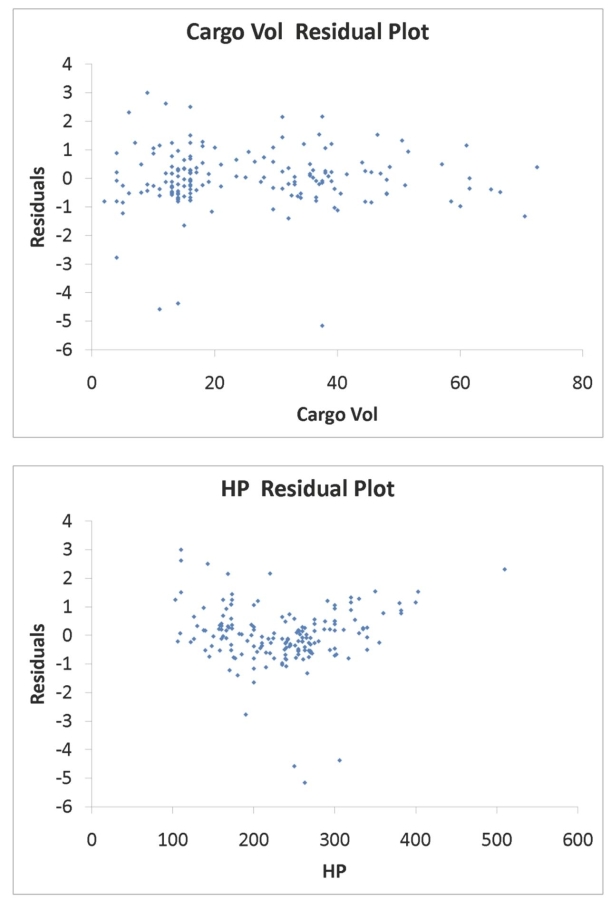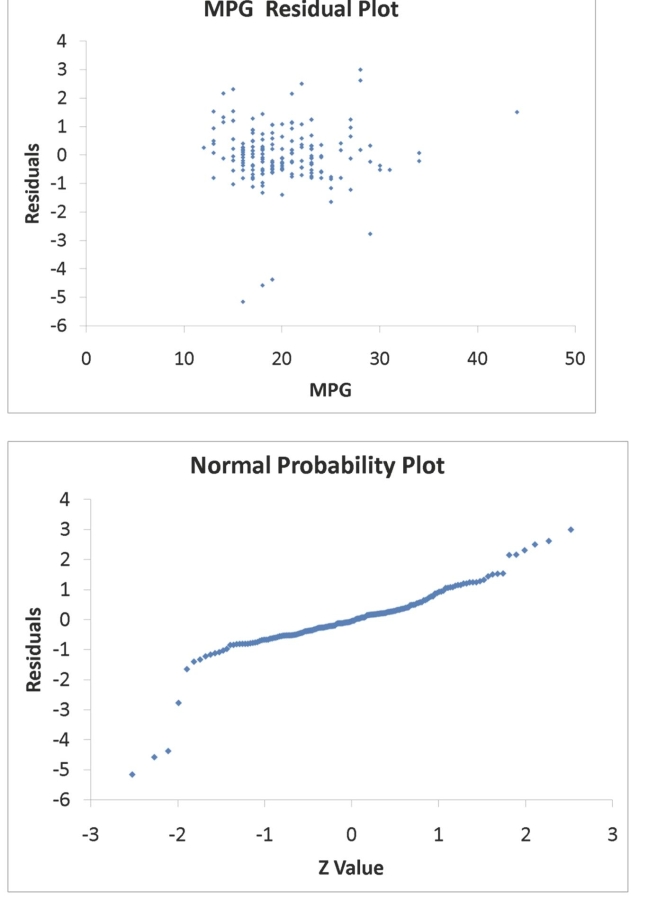SCENARIO 18-9 What are the factors that determine the acceleration time (in sec.)from 0 to 60 miles per hour of a car? Data on the following variables for 171 different vehicle models were collected: Accel Time: Acceleration time in sec. Cargo Vol: Cargo volume in cu.ft. HP: Horsepower MPG: Miles per gallon SUV: 1 if the vehicle model is an SUV with Coupe as the base when SUV and Sedan are both 0 Sedan: 1 if the vehicle model is a sedan with Coupe as the base when SUV and Sedan are both 0 The regression results using acceleration time as the dependent variable and the remaining variables as the independent variables are presented below. SCENARIO 18-9 cont.  The various residual plots are as shown below.
The various residual plots are as shown below.  SCENARIO 18-9 cont.
SCENARIO 18-9 cont.  SCENARIO 18-9 cont.
SCENARIO 18-9 cont.  The coefficient of partial determination
The coefficient of partial determination  of each of the 5 predictors are, respectively, 0.0380, 0.4376, 0.0248, 0.0188, and 0.0312. The coefficient of multiple determination for the regression model using each of the 5 variables
of each of the 5 predictors are, respectively, 0.0380, 0.4376, 0.0248, 0.0188, and 0.0312. The coefficient of multiple determination for the regression model using each of the 5 variables  as the dependent variable and all other X variables as independent variables (
as the dependent variable and all other X variables as independent variables (  )are, respectively, 0.7461, 0.5676, 0.6764, 0.8582, 0.6632.
)are, respectively, 0.7461, 0.5676, 0.6764, 0.8582, 0.6632.
-Referring to Scenario 18-9, what is the p-value of the test statistic to determine whether
Definitions:
Equal Installments
Equal installments refer to payments of the same amount made periodically over the term of a loan or financing agreement.
Interest
The charge for borrowing money or the return on invested capital.
Nominal Annual Rate
The stated or face interest rate of a financial product, not adjusting for compounding or inflation over time.
Effective Annual Rate
This is the interest rate on an investment or loan that accounts for the effects of compounding over a given period, providing a more accurate picture of financial returns or costs.
Q2: Each forecast using the method of exponential
Q24: Referring to Scenario 19-9, an R chart
Q31: The quality control manager of a candy
Q123: Referring to Scenario 16-3, if a three-month
Q124: Referring to Scenario 19-5, a p control
Q127: Referring to Scenario 16-7, the fitted exponential
Q147: In selecting an appropriate forecasting model, the
Q159: The method of moving averages is used<br>A)to
Q178: Referring to Scenario 18-8, which of the
Q292: Referring to Scenario 18-8, which of the